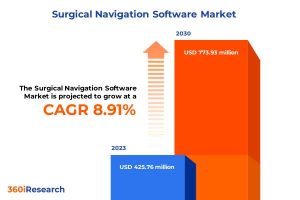Identifying Cost-Saving Opportunities through Data Insights
The data-based approach of today makes the art of finding cost-cutting opportunities into something close to a science of exactitude. Businesses these days use powerful analytics software, unlocking potentially hidden inefficiencies and areas of saving in operational data—the existence of which might not be apparent per se.
For instance, monitoring data in real-time from facilities in different locations can result in the discovery of trends in energy usage. Cutting energy use during peak demand means businesses can grasp these opportunities for higher dividends by reducing expensive inefficiencies in operations and bargaining away for energy supplies at a much lower cost.
More importantly, predictive analytics helps to curb expensive challenges before they genuinely accrue.
Instead of reacting to equipment failures or unexpected downtime, organisations can use historical data trends to schedule regular maintenance, thereby extending the lifespan of machinery and reducing repair costs.
This proactive approach not only saves money but also boosts overall productivity by ensuring that operations run smoothly without unplanned interruptions.
Optimising resource allocation for maximum ROI
By transforming raw data into useable insight, the business puts itself on a precise course for sustained cost control and enhanced ROI.
Strategic resource optimisation is not just about cost-cutting; it’s really about the deliberate deployment of your assets to deliver the highest value sustainably. Advanced analytics software can elevate such a process by transforming data into valuable insights that would help pinpoint inefficiencies in a company and quantify an opportunity being exploited.
For example, business enterprises can turn to machine-learning algorithms to predict future consumer demand rather than using regular forecasting. In this way, businesses can adjust their inventory levels and stay invested in leading strategies.
Moreover, real-time analytics encourages agile decision-making. Businesses no longer have to make rushed decisions while waiting for quarterly reports; data minutes old can be used to quickly shift resources in case market conditions change.
Consider a marketing campaign that is underperforming: real-time analytics allows you to withdraw money from that effort and put those funds into what is having the most significant effect. Not wasting a minute ensures that every buck you sow goes directly toward reaping returns, without turning into a potential financial drain.
Real-World Applications of Building Analytics for ROI Improvement
IoT sensors and advanced analytics for buildings have one of the most transformational, practical applications concerning predictive maintenance.
In this regard, managers are empowered to anticipate equipment failure even before it happens, which incredibly lessens lost time and money that could be incurred from such repairs.
Proactive work can lead to uniquely long operation lives for critical systems, specifically around HVAC and elevators, while ensuring optimal operational efficiency – a direct infusion into ROI and displacing emergency repairs and excessive energy use connected with them.
Another compelling application of big data is in the optimisation of space usage. Building analytics software provides a slew of fine-grained data insights about how different areas within a facility are actually used over time.
Armed with this knowledge, businesses can reroute their spaces in terms of their actual profiles of use, rather than leaving what might be contradictory office spaces unused.
In this way, businesses can work to economize real estate expenditures by only using space that registers sensitively in augmenting the productivity and satisfaction of the employees.
Case studies: successful implementations and results
Viewing theory in action can be a strong piece of evidence to the potential power of building analytics software.
A good example is a retail chain that applied advanced analytics to good effect in inventory management, which realised a 30% reduction in stock-out situations and a 20% reduction in overstock situations.
But equipped with the insights developed from all the real-time data, it adjusted inventory levels dynamic to seasonal trends, local demographics, and buying patterns, transforming the erudite guessing game into a fine science.
The utility company Cooperative Energy uses this predictive maintenance software with sophisticated analytics that will allow them to identify equipment likely to fail before issues can arise, and they experience a 50% reduction in unplanned downtime, saving millions of dollars each year in repair costs.
In such tangible ways, investing in robust analytics tools doesn’t just accumulate data; it automatically turns it into enormous monetary gain while greatly improving the operational efficiency and ultimate ROI.
Strategies for Integrating Analytics into Existing Building Systems
Embedding analytics into existing systems, whether the one offered by CIM or any similar, means pulling in many directions at once to harness the potential of data in performing optimisation and achieving maximum ROI.
The first strategy in those regards is interoperability, meaning new tools for analytics can fit with what is pre-existing on the infrastructure. Open protocols like BACnet and Modbus allow for seamless communication between otherwise disparate systems and comprehensive data collection without incurring exorbitant costs from complete overhauls.
Another pivotal strategy is phased implementation. By gradually deploying analytics modules in critical areas such as HVAC or lighting, building managers can fine-tune workflows and validate ROI before expanding across other systems.
This staggered approach minimises disruption while allowing continuous learning and adaptation based on initial insights. Finally, a data influenced culture needs to be instilled in the organisation.
Training staff about the importance of the insights derived from the analysis will enable them to make informed decisions for added efficiency and savings.
Collaboration should be encouraged between IT departments, facility managers, and external vendors – each aligned toward common goals, maximising the intended impact of deployed analytics solutions.




